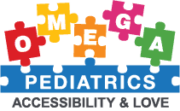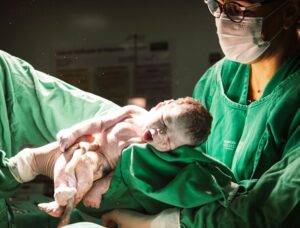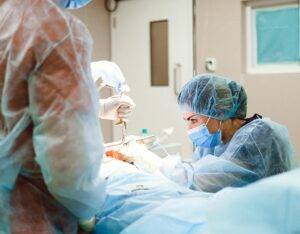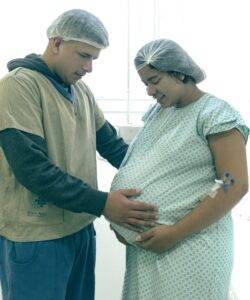In obstetrics, where the stakes are high, thorough and effective training can’t be stressed enough. Medical professionals who handle childbirth need to be well-versed in theoretical knowledge and practical skills. These skills are best honed through hands-on practice, where newborn baby forceps/OB manikins come into play.
Newborn baby forceps/OB manikins are advanced training tools that replicate real-life scenarios in a controlled environment, allowing healthcare providers to practice, refine, and perfect their techniques. This article delves deep into the benefits of using these manikins in medical training and why they’re indispensable in producing highly competent obstetricians, nurses, and midwives.
What are Newborn Baby Forceps/OB Manikins?
Newborn baby forceps/OB manikins are highly sophisticated simulation tools used in medical training to replicate the conditions and challenges of childbirth. These manikins closely mimic the newborn’s anatomical and physiological features, allowing trainees to practice various obstetric procedures.
These procedures include the use of forceps, vacuum extraction, and handling shoulder dystocia—a condition where the baby’s shoulders get stuck during delivery. Manikins range from basic models that provide a general understanding of newborn anatomy to advanced simulators with sensors, interactive features, and realistic physical responses.
The Role of Forceps in Childbirth
Forceps are medical instruments resembling large spoons or tongs used to assist in delivering a baby when labor is not progressing as expected. Their use has declined due to modern techniques like vacuum extraction, but these are still essential in certain situations, such as when the baby is in distress or when a quick delivery is needed.
Training with newborn baby forceps/OB manikins allows medical professionals to master the precise technique required to use forceps safely, minimizing the risk of injury to the mother and the newborn.
The Importance of Practical Training in Obstetrics
Bridging the Gap Between Theory and Practice
Medical students and professionals spend years studying the complexities of childbirth, but theoretical knowledge alone is insufficient. Obstetrics is a hands-on field, where the ability to perform procedures under pressure spells the difference between a successful delivery and a tragic outcome.
Newborn baby forceps/OB manikins provide the practical experience to bridge the gap between theory and practice. These manikins offer a realistic childbirth simulation, allowing trainees to apply what they have learned in a controlled and safe environment.
The Consequences of Inadequate Training
Inadequate training in obstetrics leads to serious, even life-threatening complications during childbirth. The improper use of forceps, for instance, results in significant injuries to the newborn, such as skull fractures, brain damage, or facial nerve injuries. Similarly, mismanaging a delivery due to a lack of hands-on experience leads to severe outcomes like shoulder dystocia or uterine rupture.
By incorporating newborn baby forceps/OB manikins into their training programs, medical schools and hospitals ensure their trainees are well-prepared to handle the complexities of childbirth, reducing the risk of adverse outcomes.
Key Benefits of Using Newborn Baby Forceps/OB Manikins
1. Realistic Simulation of Childbirth
This is one of the most compelling benefits. The newborn baby forceps/OB manikins are designed with intricate details that replicate the anatomy of a newborn, including the head, body, and limbs. Advanced models include features like simulated crying, heartbeats, and movement to mimic the behavior of a newborn during delivery. This realism is crucial for helping trainees develop the tactile sensitivity and muscle memory needed to perform obstetric procedures accurately.
2. A Safe and Controlled Learning Environment
Learning from mistakes is essential in training, but errors have dire consequences in obstetrics. Newborn baby forceps/OB manikins offer a safe and controlled environment where trainees practice and make mistakes without putting real patients at risk. This ability to learn from errors without causing harm builds confidence and competence, allowing trainees to approach real-life situations with greater assurance and skill.
3. Enhanced Skill Retention Through Repetition
Research has consistently shown that hands-on practice significantly improves skill retention compared to theoretical learning alone. When trainees repeatedly practice on newborn baby forceps/OB manikins, they’re likely to retain the techniques learned. This is particularly important in obstetrics, where quick and precise actions are required. The more practice on a newborn baby forceps/OB manikin, the more ingrained the skills, leading to better performance during real-time deliveries.
4. Building Effective Teamwork and Communication
Childbirth involves a team of healthcare providers, including obstetricians, nurses, midwives, and sometimes pediatricians. Effective communication and teamwork are critical in ensuring a safe and successful delivery. Newborn baby forceps/OB manikins provide an excellent platform for team-based training exercises.
By simulating various childbirth scenarios, including emergencies, teams practice working together, improving their coordination and understanding of each other’s roles. This collaborative practice helps teams function more efficiently during real-life deliveries, ultimately improving patient outcomes.
5. Customizable Training Scenarios for Diverse Learning
Every childbirth is unique, and the challenges arise during the process. One of the key advantages of newborn baby forceps/OB manikins is their ability to be customized to simulate a wide range of scenarios—routine delivery, a breech birth, or a case of shoulder dystocia.
These newborn baby forceps/OB manikins can be programmed to present different challenges. The varied scenarios allow trainees to gain experience managing a wide spectrum of situations, making them more versatile and better prepared to handle the unpredictability of real-life childbirth.
6. Immediate Feedback and Self-Assessment
This is one of the standout features during training sessions. Many newborn baby forceps/OB manikins have sensors and monitoring systems that track the trainee’s actions and provide instant feedback. For example, if a trainee applies too much pressure with forceps or positions them incorrectly, the newborn baby forceps/OB manikin signals potential harm to the newborn. This immediate feedback is invaluable for learning, allowing trainees to correct their techniques in real time and reinforce proper practices.
7. Addressing Ethical Concerns in Medical Training
Ethical considerations are paramount in medical training, particularly involving procedures as delicate as those in obstetrics. Practicing on real patients, especially in high-risk situations, poses significant ethical dilemmas. It’s impractical or unethical to expose expectant mothers and newborns to unnecessary risks for the sake of training.
Newborn baby forceps/OB manikins resolve this problem by offering a safe, effective, and ethical alternative for skill development. These allow trainees to gain experience without compromising patient safety.
The Role of Newborn Baby Forceps/OB Manikins in Continuous Medical Education
The Need for Ongoing Skill Development
Medical training is not a one-time event but a continuous process. As medical knowledge and technology evolve, so do the healthcare providers. This is especially true in obstetrics, where new techniques and best practices are constantly being developed.
Newborn baby forceps/OB manikins provide a platform for continuous skill development to support ongoing medical education. Even experienced practitioners benefit from regular practice on these newborn baby forceps/OB manikins by allowing them to stay current with advancements in their specialty field and refine their techniques.
Combat Skill Decay in Obstetric Procedures
Skill decay, the gradual loss of proficiency in a skill not regularly practiced, is a significant concern in the medical field. In obstetrics, where precision and timing are critical, skill decay has serious consequences. Regular practice on newborn baby forceps/OB manikins combats this decay by sharpening healthcare providers’ skills and proficiency. Whether routine delivery or complex birth, regular use of newborn baby forceps/OB manikins ensures practitioners maintain competence and confidence in their abilities.
Provide Opportunities for Advanced Training
As healthcare providers gain experience, they expand their skill set and take on complex obstetric cases. Newborn baby forceps/OB manikins are ideal for advanced training, as they simulate rare or challenging scenarios that a practitioner may not encounter frequently. This advanced training allows experienced providers to continue growing professionally, taking on difficult cases with the knowledge and skills required to manage them.
How Newborn Baby Forceps/OB Manikins Improve Patient Outcomes
Reduce the Risk of Birth Complications
The ultimate goal of any medical training program is to improve patient outcomes. In obstetrics, this means ensuring the safety and well-being of the mother and newborn during childbirth. By providing thorough, hands-on training, newborn baby forceps/OB manikins reduce the likelihood of complications during actual deliveries.
Trainees who have practiced these newborn baby/OB manikins are better equipped to recognize potential problems early and to respond appropriately, leading to safer deliveries and better outcomes for mothers and babies.
Enhance Overall Patient Safety
Patient safety is the cornerstone of quality healthcare and it’s critical in obstetrics. Newborn baby forceps/OB manikins enhance patient safety since medical professionals are well-trained and competent. When healthcare providers have extensive practice in a simulated environment, they perform effectively in real-life situations, reducing the risk of errors that could compromise patient safety.
Boost Patient Confidence in Healthcare Providers
Patients who are confident in their healthcare providers are likely to have a positive experience during childbirth. Medical professionals who had rigorous training with newborn baby forceps/OB manikins are more confident in their abilities, which, in turn, boosts patient confidence. Trust in their healthcare team affords expectant mothers peace of mind during what can be a stressful and anxiety-inducing time.
Integrating Newborn Baby Forceps/OB Manikins into Medical Education Programs
The Growing Trend of Simulation-Based Training
Simulation-based training is increasingly popular in medical education, and for good reason. It provides a risk-free environment where students and practitioners hone their skills. Newborn baby forceps/OB manikins are at the forefront of this trend, making it an invaluable tool in obstetric training programs.
By integrating these newborn baby forceps/OB manikins into their curricula, medical schools and training programs provide the highest quality education, preparing their graduates for the realities of clinical practice.
Create Standardized Training Protocols
Newborn baby forceps/OB manikins are utilized to create standardized training protocols. These protocols outline the procedures and scenarios to be mastered during training, providing students with consistent, high-quality training.
Standardization also evaluates trainees’ progress, allowing educators to identify areas where additional practice is needed. By establishing clear guidelines for training with these newborn forceps/OB manikins, educational institutions produce technically competent players in the delivery room.
Prepare Trainees for the Unpredictability of Childbirth
Childbirth is inherently unpredictable, with each delivery presenting unique challenges. Newborn baby forceps/OB manikins prepare trainees for this unpredictability by exposing them—to routine delivery or a complicated case of multiple interventions.
Newborn forceps/OB manikins equip trainees with valuable experience to handle whatever comes their way. This preparation develops healthcare providers who are technically proficient, adaptable, and resilient amidst unexpected challenges.
The Future of Obstetric Training with Newborn Baby Forceps/OB Manikins
Advancements in Simulation Technology
As technology advances, so will the capabilities of newborn baby forceps/OB manikins. Future models include more sophisticated features, such as enhanced physiological responses, more realistic tissue textures, and advanced sensors that provide detailed feedback on trainees’ performance. These advancements will make the training experience more immersive and beneficial, improving the quality of obstetric care for future healthcare professionals.
Expanding the Use of Manikins Across Medical Specialties
While newborn baby forceps/OB manikins are primarily used in obstetric training, their benefits extend to other medical specialties. For example, pediatricians and neonatologists use these devices to practice newborn resuscitation techniques, while emergency room staff use them to prepare for childbirth-related emergencies. As technology evolves, we expect these tools to be used in various medical training, enhancing healthcare providers’ skills in numerous fields.
Embrace the Benefits of Newborn Baby Forceps/OB Manikins in Medical Training
Newborn baby forceps/OB manikins have become indispensable in medical training, particularly in obstetrics. Their ability to provide realistic, hands-on experience in a safe and controlled environment makes them invaluable for developing the skills and confidence needed to handle the complexities of childbirth.
Incorporating newborn baby forceps/OB manikins into obstetrics programs, medical schools, and other healthcare institutions ensures their trainees provide the highest standard of care. As we look into the future, continued use and advancement of these newborn baby forceps/OB manikins will improve patient outcomes and the quality of obstetric care. This means safer deliveries, better outcomes, and a more positive birthing experience for expectant mothers.
For more insights into pediatric care and other related topics, visit Omegapediatrics.com. We also recommend checking out these blog posts:







